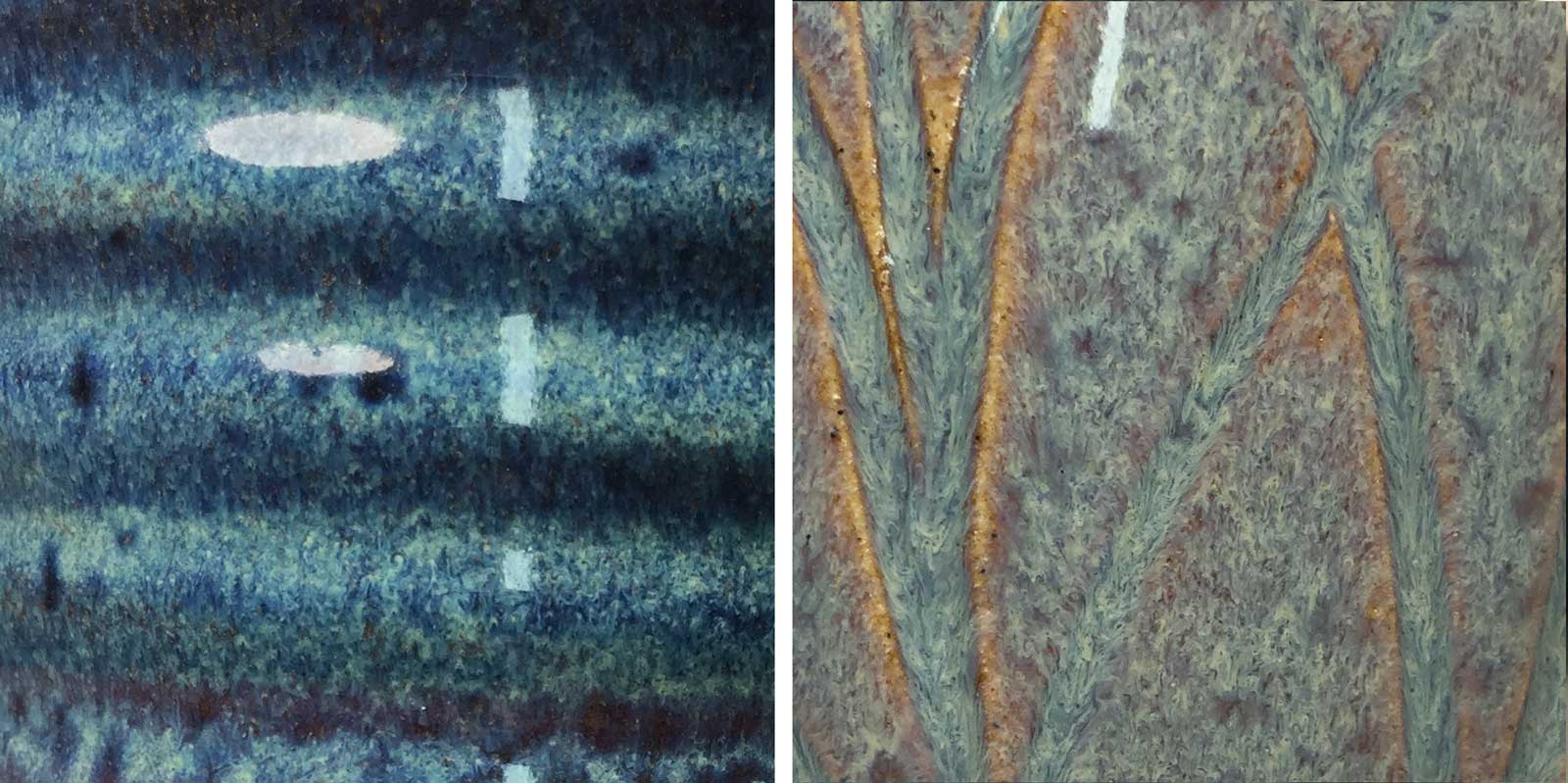Close-up of Floating Blue on cone 6 dark/buff burning bodies
This glaze recipe was originally popularized by James Chappell in the book "The Potter's Complete Book of Clay and Glazes", our insight-live.com/glossary/302">code number is G2826R. It is and was loved and hated. Why? The high Gerstley Borate content makes it finicky. But the magic ingredient is not the GB, it is the rutile, Rutile makes the cobalt and iron dance. This recipe produces a number of different mechanisms of variegation. Color and opacity vary with thickness. Small rivulets of more fluid glass flow around more viscous phases producing micro-areas of differing colors and opacities. Titanium crystals sparkle and calcium-borate creates opalescence. Bubbles of escaping gases (from GB) have created pooling. Small black speckles from unground or agglomerated particles of iron are also present. Surprise! This is actually GR6-M Ravenscrag Floating blue. All the visuals, but without of the gelling and crazing headaches.
Pages that reference this post in the Digitalfire Reference Library:
Gerstley Borate, G2826R - Floating Blue Cone 5-6 Original Glaze Recipe, GR6-M - Ravenscrag Cone 6 Floating Blue, GA6-C - Alberta Slip Floating Blue Cone 6, FLB - Floating Blue

This post is one of thousands found in the Digitalfire Reference Database. Most are part of a timeline maintained by Tony Hansen. You can search that timeline on the home page of digitalfire.com.
